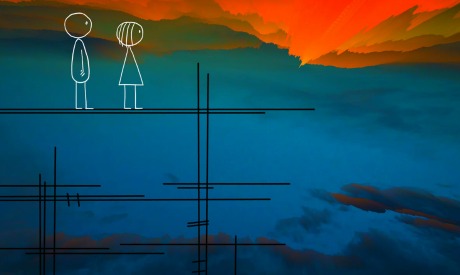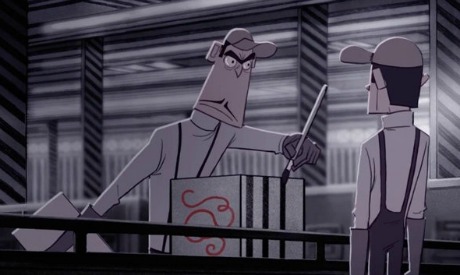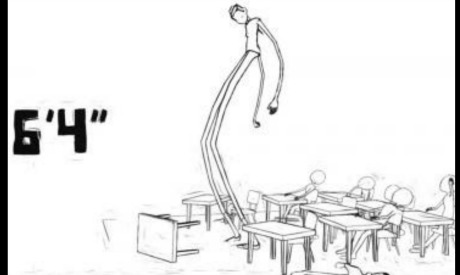Watching a number of animated shorts in succession, one can only marvel at the beauty and variety of this medium. With its different styles like the well-known hand-drawn style of Disney classics and Ghibli Studios and the CGI of Pixar, and others such as cut-out, stop motion, and clay, one can see how there is still so much to be experimented with through this art form.
While short animated films require hard work for months, a large team and a budget much bigger than a short film, little is known of much of what is produced.
The Animation Show of Shows aims to highlight some of the best short animated films each year by screening them in different venues worldwide.
Its 17th edition was hosted by Zawya on Sunday 25 December featuring eleven award-winning animated films. Each edition offers a fine selection of films. Oscar-winning films in previous editions include the colourful and whimsical The Lost Thing, the bitter-sweet La Maison en Petit Cubes (The House of Small Cubes) as well as the heart-wrenching sepia coloured Father and Daughter.
The 17th edition included many good films. Yet some stood out through their style, while others through their story, and a few managed to excel in both. Interestingly enough, two of the most memorable films in the series were tapping in to themes related to the future of humanity -- space and time travel.

(Photo: still from We Can’t Live Without Cosmos)
The World of Tomorrow by Don Hertzfeldt is a sci-fi short on a future where people have managed to achieve immortality through cloning of younger bodies to which one could transfer all memories and thoughts -- in short, one’s consciousness.
The film relays the story of a third-generation clone using time-travel to contact the real human, a little child, out of which this clone is derived. Like all good sci-fi stories, it does not only ponder what will happen in the future, but what these changes mean for humanity and how they affect the individual. It is a sad tale about a clone trying to make sense of the world.
While one of the scariest parts of death is the idea that all ones thoughts, emotions and memories cease to exist in a mere second, the option of having ones consciousness perpetually being passed from one body to another seems frightening as well.
What does it mean for a clone to carry our memories, and what do they even mean outside the context of our lives? All these questions are brought up upon watching the film.
Yet despite the morose mood of the film, it is not all bleak. The contrast between the subdued voice of the clone and the childish responses of the human add a lighthearted feel to the film.
The complexity of its themes and emotional impact is also contrasted by simple pencil animation with shifting colourful backgrounds that portray the lucid state of the mental sphere.
The Russian film We Can’t Live Without Cosmos appears to be a story about two friends striving to achieve their dream of space travel. The story follows two friends, who share a very strong bond, during their trials at the space station.
Like many of the animated shorts, it is bereft of dialogue. The film shows how they manage strenuous training, and in contrast to their serious peers they deal with the mission in a playful manner, they jump up and down on the bed at night and read a book titled We Can’t Live Without Cosmos before they go to sleep.
Being on a space mission is for them an enactment of a childhood dream.
Yet when they finally accomplish their dream of being in space, the mission goes awry, and one of the rockets explodes. The story then turns into a heart-wrenching tale about loss as one of the friends has to cope with the death of the other.
The contrast is heightened in the way the friend deals with the loss versus the scientist community that just cross out the number of who has died in a mechanical manner.

(Photo: still from The World of Tomorrow)
Contrasts recur throughout many of the animated shorts, and it seems that because of its high visual aspect, animation can best portray the contrasting and the abstract.
One of the interesting films in the selection is Stripy, a playful experiment also playing on opposites. The film’s theme is overused enough -- it is of factory workers all having to paint some boxes in black stripes and just one worker paints them in red convoluted lines.
However, what makes the film stand out is its synchronisation with the Hungarian Dance by Brahms. The music was masterfully used to portray the conflict between that factory worker and his bosses.
In a clip following the animated film, the two Iranian animators, who are brothers, discuss the making of the film. They say they chose this music in specific because of its fluctuation between highs and lows.
Another unique usage of form is The Ballad of Holland Island House. The film is set to a ballad relaying the story of a house since its beginning as a tree until it’s sinking in the sea, is made through clay painting. The form evokes the image of oil paintings, yet is made through clay that is flattened.
The usage of clay allows for the images, which are painted in an impressionistic manner, to constantly shift and flow into one another. What is interesting about the film is how the form serves the story itself. The story, which depicts the changing nature of the earth and how through this process an island is sunk, is heightened through the fluidity of the clay painting style.

(Photo: still from Stripy)
Other animation styles included stop-motion seen in The Story of Percival Pilts, a story of a young boy, who decided never to touch the ground again and started walking on stilts that grew higher and higher.
It is a playful experiment, and narrated in a rhyme evoking a mixture of Dr. Seuss’s Oh, The Places You’ll Go as well as the stories of Tim Burton’s different characters. Message Dans l’air uses cut-out animation and relays a simple love story between two neighbors, also without dialogue.
Love in the Time of March Madness, a confessional rendering of a tall woman and the process of finally accepting her body, was also one of the highlights of the show.
It is painted in a comic book style in black and white and follows the journey towards her acceptance through a witty and endearing monologue.
The Animation Show of Shows only reminds one of the magical nature of animated films. It also brings to mind contemplations regarding the local scene of animation.
While some interesting works have definitely been made by Egyptian students screened during Journées Animées, a festival for animated film at the French Cultural Institute in Cairo, it seems that upon graduating, because of a lack of funds, students let go of their dreams to make animated films.
There is still so much to explore through this form and styles can range from the very simple to the elaborate. Perhaps production companies in Egypt should pay more attention to this art form that has a lot of potential.

(Photo: still from Love in the Time of March Madness)
For more arts and culture news and updates, follow Ahram Online Arts and Culture on Twitter at @AhramOnlineArts and on Facebook at Ahram Online: Arts & Culture
Short link: